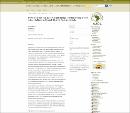| dc.description.abstract | Anaemia is the most widespread nutrition related public health problem world-wide and yet in Uganda, there is little national data on anaemia and its likely causes amongst school children. The aim of this study was to assess the prevalence, dietary and health risk factors of nutritional anaemia amongst 11-14 year old girls attending primary schools in Masindi District of Western Uganda. Two schools, one urban and the other rural, were selected for this cross-sectional study. A total of 109 girls from
the upper primary section were randomly selected from both schools. The Lovibond comparator was used to assay Hemoglobin (Hb) level in the whole blood after conversion of Hb to oxyhemoglobin by ammonia. Pre-tested structured questionnaires were used to collect data. Incidences of malaria were self reported. The dietary intake of iron, protein, folate, riboflavin, energy, vitamin C, dietary fibre and vitamin A was estimated from the East African food composition table used to analyze the 24-hour
dietary recalls. Associations between anaemia and factors under investigation were examined using Pearsonfs chi-square test and Pearsonfs correlation coefficient analysis. Statistical significance was considered at p< 0.05. The overall prevalence of anaemia was 46%. It was twice as high in the urban school (61%) compared to the rural school (31%). There was a high intake of plant . based diets; majority of the
school children with excess intake of fibre, inadequate intake of iron, protein, folate, riboflavin, energy and vitamin A were anaemic (p . 0.001). Malaria incidences were many and though de-worming was common in schools, it was not consistent. Performance of de-worming by nurses had more impact than that of the teachers. Anaemia was positively correlated with inadequate dietary intake (r = 0.61, p < 0.001), malaria incidences (r = 0.54, p = 0.02) and improper de-worming (r = 0.51, p = 0.04). A high prevalence of anaemia was found amongst the girls, particularly in the
urban school. Improper de-worming, malaria incidences and poor feeding were the risk factors of nutritional anaemia. There is, therefore, an urgent need for a national anaemia assessment among this age group and the strengthening of the current School Health Program to address aspects of health and feeding in schools in Masindi district and Uganda as a whole. | en_US |

